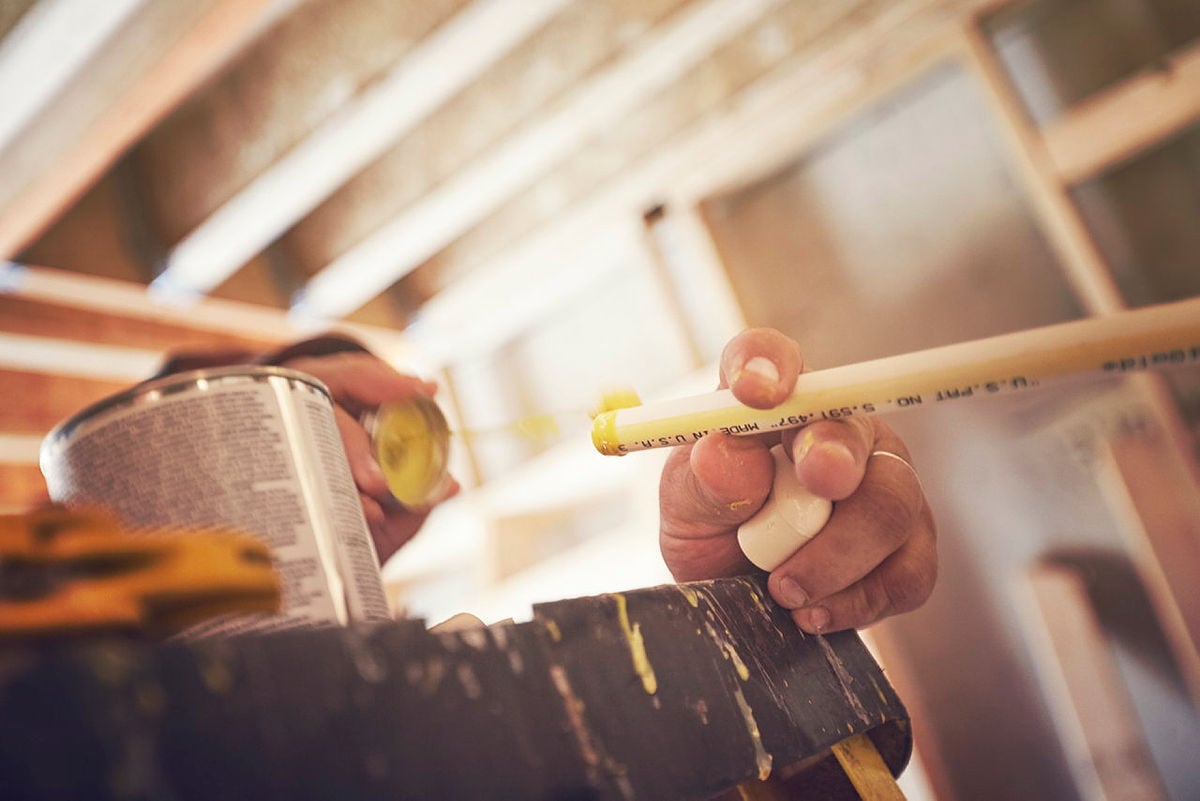
By: Jonathan Simon on July 13th, 2021
COMMON MISTAKES WHEN USING SOLVENT CEMENT FOR CPVC SYSTEMS
As a plumbing service specialist, you’ve seen a lot of pipes fail for a lot of different reasons. With FlowGuard Gold® CPVC – which has a long history of proven reliability -- it’s likely the failure occurred because of an installation error.
One of the most common mistakes that we’ve encountered is the improper application of solvent cement. Solvent cement is a vital component in the installation, as it acts as weld between the joint and the pipe. When improperly applied, it can leave the pipes vulnerable to weakness (if too much solvent is applied) or leakage (if not enough is applied).
Following, are some of the typical errors you may encounter on your repair jobs.
The Dry Fit
The number one mistake inexperienced installers make with solvent cement is that they don’t use it all. This is called a dry fit. With FlowGuard Gold, the fit between the joint and pipe is very tight – so it’s possible the installer can forget to apply solvent cement to a joint. Even with a dry fit, FlowGuard Gold can still hold more than 100 PSI of pressure for a period of time and will even pass the pressure test. But, because FlowGuard Gold was designed to be used with solvent cement, the dry fit will eventually loosen, causing a failure.
Dry fits typically occur when the installer pre-assembles the system well before applying solvent cement. It’s important that the solvent is applied as the joints are assembled. Be sure to check the fit between each pipe and fitting and then immediately apply the solvent cement. This will ensure the proper weld.
Not Enough Cement
As mentioned earlier, solvent cement works by actually melting the pipe and the fitting and fusing it together. If there is not enough cement applied, the weld may not form around the entire joint, which can create gaps and leak paths. So, it’s critical that there is full coverage around the entire circumference of the pipe.
To ensure full coverage, maintain applicator contact with the pipe and fitting during the entire process. When inserting the pipe into the fitting, complete a ¼ to ½ rotation of the pipe to further ensure coverage. When complete, visually inspect the pipe to make there is a continuous bead of cement all around it. Once confirmation of proper application is made, immediately secure the fitting to the pipe.
Too Much Cement
While it’s important not to be stingy with your cement, it’s equally critical that you don’t apply too much.
If there is too much cement on the pipe, it will typically remain on the exterior of the joint, but if there is too much cement in the fitting, it can be pushed into the fitting. If there is extra cement in the fitting, it will be pushed into the interior of the pipe, where it can pool and soften the CPVC. This can create a weak spot in the fitting, which can compromise its ability to maintain pressure.
Applying too much cement can also cause clogs within the fitting, as the cement pools and dries, restricting water flow. For best results, apply a healthy coat of cement on the pipe, but go easy on the fitting.
Waiting Too Long to Assemble
Solvent cement begins to set and cure the moment you apply it. In as little as two to three minutes, the cement will be partially cured and won’t be able to form the proper weld. So, it’s important to immediately assemble the connection after applying the cement.
There are three licensed FlowGuard Gold solvent cements manufacturers. Each has varying set and cure times. So, be sure to check the label to see how much leeway you have with your installation.
Turning On the Water Too Early
Understanding the manufacturer’s recommended cure time is vital in the assembly process. When the solvent is fully cured, the pipe will perform at its fully rated pressure and temperature. If the water is turned on before the solvent has had the opportunity to cure, it can compromise the integrity of the installation.
Cure times between products can range from 15 minutes to an hour depending on manufacturer and local conditions. So read the instructions to ensure that you give the solvent enough time to perform to its fullest.
Improper Preparation
When installing CPVC pipes, most inexperienced installers will simply cut the pipe and attach it to the fitting. However, this will create a straight edge that can scrape the solvent off the fitting and push it into the pipe. To avoid this, bevel the pipe. By doing so, you will create a “bullet tip” shape, which will draw the solvent cement around the pipe, making a stronger connection.
For more installation tips, view our on demand FlowGuard Gold Pipe and Fittings Installation Training.


